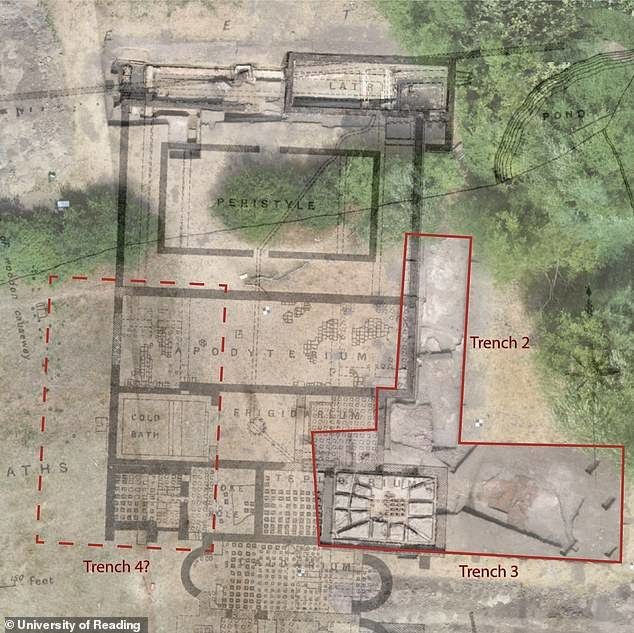
Baths and bathhouses have long been top-of-the-list of what the Romans did for us.
But an excavation near Reading has found evidence of a bathhouse which may have existed before the Empire invaded in AD43.
In fact, ruins suggest ancient Britons may have already had saunas in the Iron Age, decades before the Romans arrived.
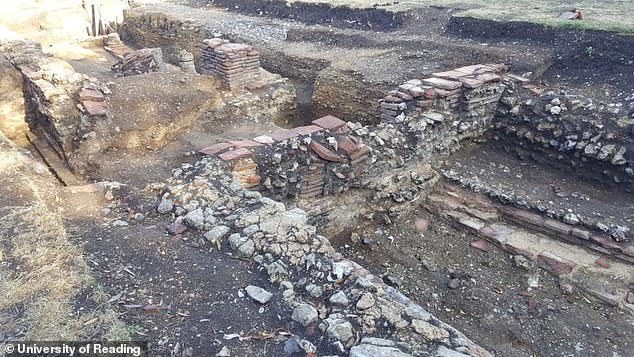
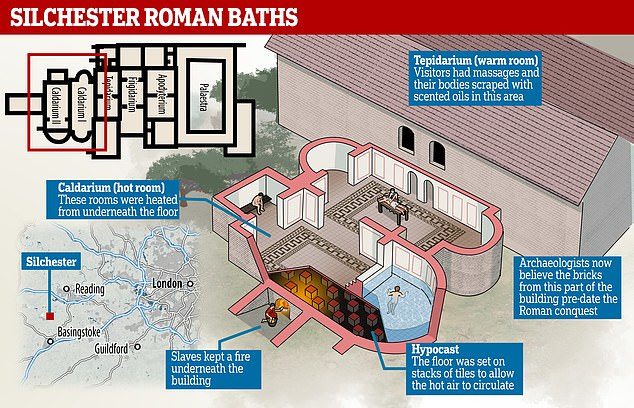
The bricks - in a pre-Roman dig site - were bordered by a channel for water to flow out of the room, which suggest it was used for bathing.
In light of the find, Reading's Professor Michael Fulford told the Times: 'Late Iron Age baths are ever a possibility.'
The famous Roman baths in the Somerset city of Bath were built from AD60 onwards and are one of the country's biggest tourist sites.
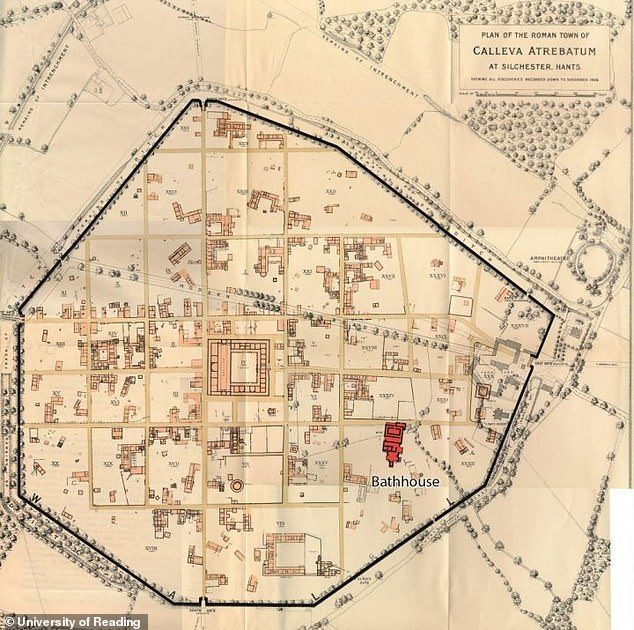
But Professor Fulford's discovery suggests the people of Britain had already invented and built similar bathhouses before Emperor Claudius's troops conquered the country and formed Britannia.
The Sichester dig is taking place between what are now Reading and Basingstoke, and is thought to be one of the Romans' first freshly-built communities.
Named Calleva Atrebatum, it was built on a former Iron Age town - the Iron Age came to an end when the Roman forces settled.
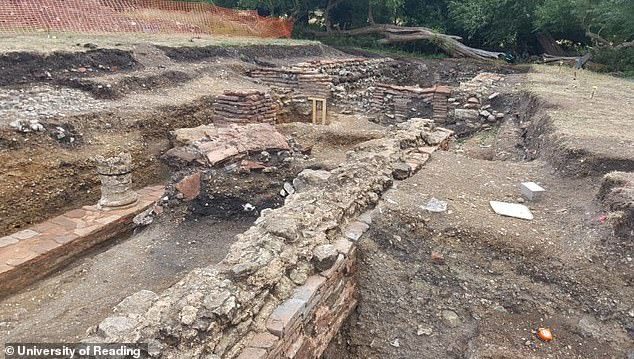
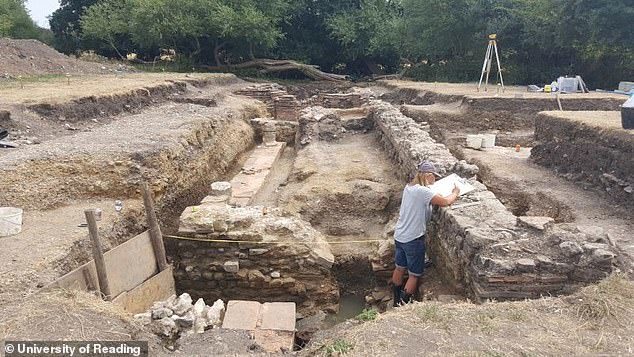
And they also found coins bearing the name Cara - after the military commander Caratacus.
The dig at Calleva has now been completed and the ruins have been recovered so the land can be used for grazing.
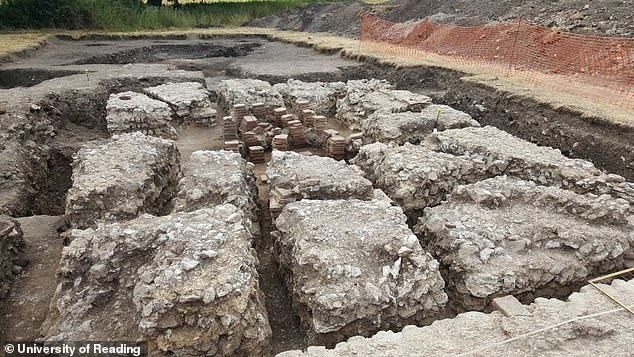
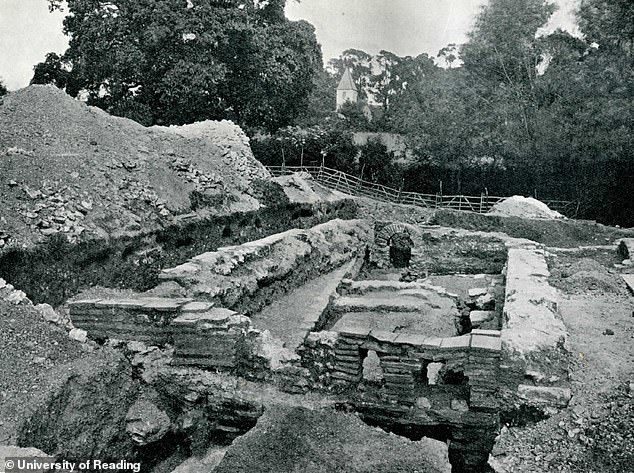
Known as thermae to the Latin invaders, they were used as a social hub and for washing in a time before people's homes had running water.
The Roman bathhouse on the Calleva site was thought to have been built during Nero's reign between AD54-68 on the site of an older, British build.
The Calleva excavation team are sharing some of their findings on a dedicated web page.
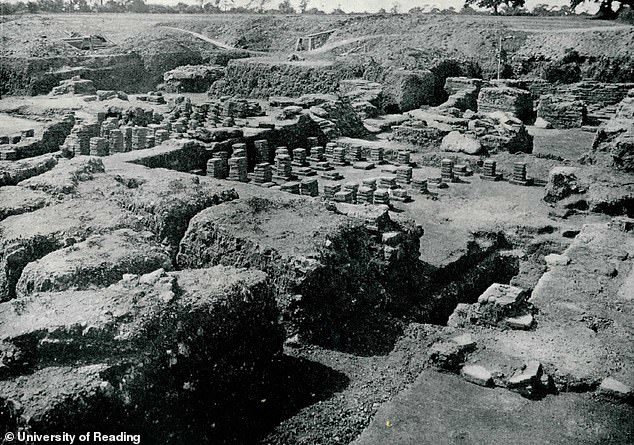
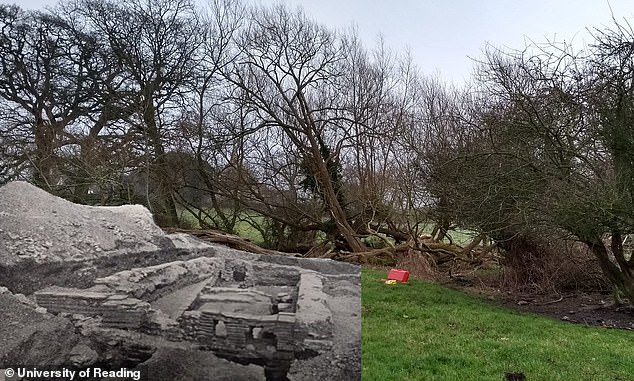
WHEN DID THE ROMANS OCCUPY BRITAIN?
55BC - Julius Caesar crossed the channel with around 10,000 soldiers. They landed at a Pegwell Bay on the Isle of Thanet and were met by a force of Britons. Caesar was forced to withdraw.
54BC - Caesar crossed the channel with 27,000 infantry and cavalry. Again they landed at deal but were unopposed. They marched inland and after hard battles they defeated the Britons and key tribal leaders surrendered.
However, later that year, Caesar was forced to return to Gaul to deal with problems there and the Romans left.
54BC - 43BC - Although there were no Romans present in Britain during these years, their influence increased due to trade links.
43AD - A Roman force of 40,000 led by Aulus Plautius landed in Kent and took the south east. The emperor Claudius arrived in Colchester with reinforcements. Claudius appointed Plautius as Governor of Britain and returned to Rome.
47AD - Londinium (London) was founded and Britain was declared part of the Roman empire. Networks of roads were built across the country.
75 - 77AD - Romans defeated the last resistant tribes, making all Britain Roman. Many Britons started adopting Roman customs and law.
122AD - Emperor Hadrian ordered that a wall be built between England and Scotland to keep Scottish tribes out.
312AD - Emperor Constantine made Christianity legal throughout the Roman empire.
228AD - The Romans were being attacked by barbarian tribes and soldiers stationed in the country started to be recalled to Rome.
410AD - All Romans were recalled to Rome and Emperor Honorious told Britons they no longer had a connection to Rome.
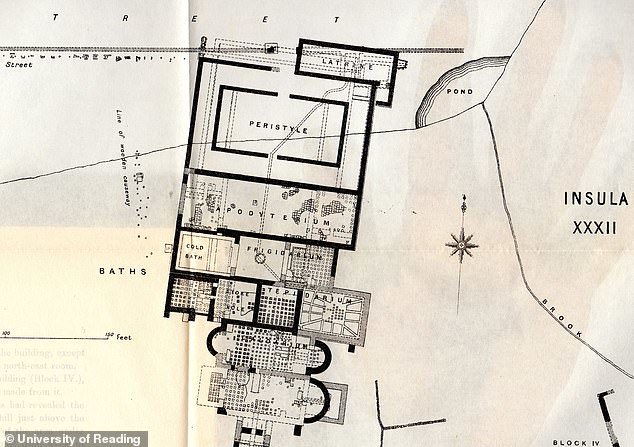



Comment: See also:
- Where Troy Once Stood: The Mystery of Homer's Iliad & Odyssey Revealed
- Bronze Age Britons were riddled with parasites but had the finest of fabrics
- Stonehenge and the buckets of lard
- 536 AD: Plague, famine, drought, cold, and a mysterious fog that lasted 18 months
- Pompeii was a full-fledged city before it was taken over by the Romans
- Oxford University genetic study finds Britons still live in 7th century tribal kingdoms
- History textbooks contain 700 years of false, fictional and fabricated narratives
Also check out SOTT radio's: Behind the Headlines: Who was Jesus? Examining the evidence that Christ may in fact have been Caesar!